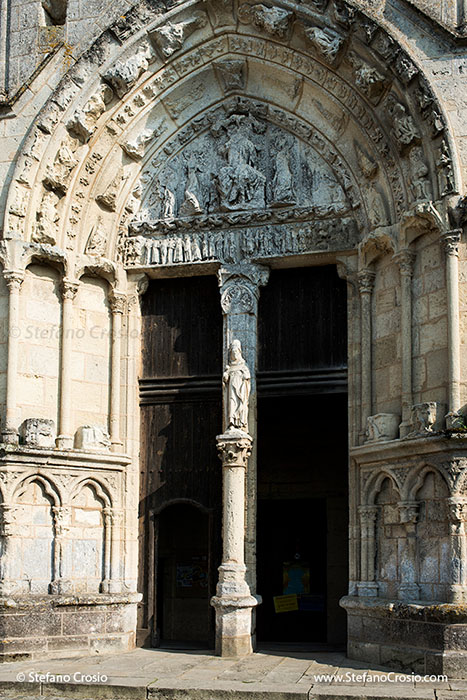
After a hiatus due to the winter holidays and the addition of “cyclone Sofia“ 😉 to our family, it is time to resume our Saint Emilion series.
Today we will briefly talk about one of the Chateaux that we visited during our stay, namely Chateau de Ferrand, and I will review their Grand Vin, of which I brought a couple bottles home.
On a previous post, we have provided a general overview of the Saint Emilion wine region and its wine classification system: if necessary, take a look at it for a refresher.

About the Producer and the Estate
Chateau de Ferrand is located near the town of Saint Emilion, on the right bank of the Dordogne river, not far from Bordeaux. The Chateau was founded in 1702 and since then it was remarkably owned by only two families: that of Elie de Bétoulaud, the founder, and since the XX century that of Baron Marcel Bich, the man who became world-famous for the inexpensive, disposable ballpoint pens which still bear an abbreviated version of his name, “Bic“.

Incidentally, there are two interesting anecdotes regarding the Baron and the abbreviation of his name: (i) Baron Bich was actually Italian – he was born in 1914 in Turin and relocated to France when he was in his thirties and (ii) the decision to drop the “h” at the end of his name in the pen brand was reportedly due to commercial reasons, namely the concern of how the word “Bich” could sound when pronounced by English-speaking consumers… 😉
Nowadays, Chateau de Ferrand is managed by Pauline Bich Chandon-Moët, a descendant of Baron Marcel Bich who married Philippe Chandon-Moët, whom we have been fortunate enough to meet and chat a little bit with in the course of our visit.

The estate counts 32 HA of vineyards where Merlot is the dominating variety (75%), as is generally the case in Saint Emilion, followed by Cabernet Franc (15%) and Cabernet Sauvignon (10%). The estate lies on a limestone plateau with clay-rich soils where the vines are planted at altitudes ranging from 150 to 330 ft (46 to 100 mt) above sea level. The average density reaches an impressive 7,000 vines/HA and the Chateau’s annual production is about 180,000 bottles.
 About the Grapes
About the Grapes
You can find out many cool facts about and the DNA profiling of Merlot, Cabernet Franc and Cabernet Sauvignon by checking out our Grape Variety Archive.
About the Wine
Chateau de Ferrand is a Saint Emilion Grand Cru Classé wine: it was promoted to the status of Grand Cru Classé in the 2012 revision of the classification of the wines of Saint Emilion (for more information, see our previous post about it). It is made as a Bordeaux blend of the three varieties that grow in the estate. Although the percentages in the blend vary from vintage to vintage, by and large they are similar to those of the plantings that we mentioned above.
Interestingly, in the winemaking process, Chateau de Ferrand’s enologist uses a cutting-edge Italian-made destemmer and optical grape sorting machine called X-Tri to automatically sort the grapes worthy of their Grand Vin from those that are not up to standard. Should you wish to know more about this unbelievable machine (it can accurately sort about 15 tons of graps per hour!), check out the producer’s website, which also includes a pretty cool video demonstrating how it works.

The must then goes through a short 2-day pre-fermentative cold maceration phase to maximize the extraction of color and aromas, followed by approximately 10 days of fermentation with natural yeast in concrete vats and then full malolactic fermentation that is started naturally, by increasing the wine’s temperature (without adding any lactic acid bacteria).

Finally, the wine ages for about 15-16 months in 60% new oak barrique barrels and 40% one-time used barriques (these are mostly French oak, with about 10% of US oak) plus 24 more months of in-bottle aging.

Our Review
Based on my tasting of several vintages of the Grand Vin at the end of the visit (there is also a Second Vin called Le Différent de Châteaux de Ferrand), I decided that I liked 1999 the best, so that is the wine we are going to review today.

As always, for my review I will use a simplified version of the ISA wine tasting protocol that we described in a previous post: should you have doubts as to any of the terms used below please refer to that post for a refresher.
Chateau de Ferrand, Saint Emilion Grand Cru AOC, 1999 ($35)
 The wine was 13% ABV and the proportions of the blend were 83% Merlot, 14% Cabernet Franc and 3% Cabernet Sauvignon. In the U.S. it retails for about $35, while in France it retailed for €50. I decanted it for an hour before enjoying it.
The wine was 13% ABV and the proportions of the blend were 83% Merlot, 14% Cabernet Franc and 3% Cabernet Sauvignon. In the U.S. it retails for about $35, while in France it retailed for €50. I decanted it for an hour before enjoying it.
In the glass, the wine was ruby red and viscous when swirled.
On the nose, its bouquet was intense and fine, although not particularly complex, with aromas of cherry, cocoa and black pepper.
In the mouth, the wine was dry, medium ABV, silky smooth; still moderately acidic, with velvety tannins and tasty; it was medium-bodied and wonderfully balanced, with intense and fine mouth flavors of cherry, raspberry, licorice and dark chocolate. It had a long finish and its evolutionary state was mature, meaning to be enjoyed now as it will likely start declining if left to age longer.
Overall, the Chateau de Ferrand 1999 was a very good wine: despite its aromas being not particularly complex, the wine really won me over once it was in my mouth. After 14 years of aging, its mouth flavors were still lively and elegant and the wine was perfectly integrated and cohesive, silky smooth and gently tannic, with still enough acidity to keep it alive and kicking – not for much longer though, so should you have a bottle in your cellar, I suggest you find a good reason to enjoy it now!
Rating: Very Good and Recommended  – $$
– $$
(Explanation of our Rating and Pricing Systems)

 When I got an email asking whether I would review samples of three Pinot Blancs from France’s Alsace region, I wholeheartedly accepted because I generally very much like Alsatian Rieslings and Gewürztraminers, but I was not familiar with their Pinot Blancs so it sounded like a great opportunity to make myself an idea. Plus, Pinot Blanc is not a grape that you often see in varietal (as in, 100% Pinot Blanc) wines: it is more often used as a blending partner of other grapes, including in the context of the blend of certain French or Italian Classic Method sparkling wines together with Chardonnay
When I got an email asking whether I would review samples of three Pinot Blancs from France’s Alsace region, I wholeheartedly accepted because I generally very much like Alsatian Rieslings and Gewürztraminers, but I was not familiar with their Pinot Blancs so it sounded like a great opportunity to make myself an idea. Plus, Pinot Blanc is not a grape that you often see in varietal (as in, 100% Pinot Blanc) wines: it is more often used as a blending partner of other grapes, including in the context of the blend of certain French or Italian Classic Method sparkling wines together with Chardonnay




 Chateau Figeac 1988
Chateau Figeac 1988 
 FRANCE, Saint Emilion
– Chateau Figeac (Premier Grand Cru Classé B)
FRANCE, Saint Emilion
– Chateau Figeac (Premier Grand Cru Classé B) 








































